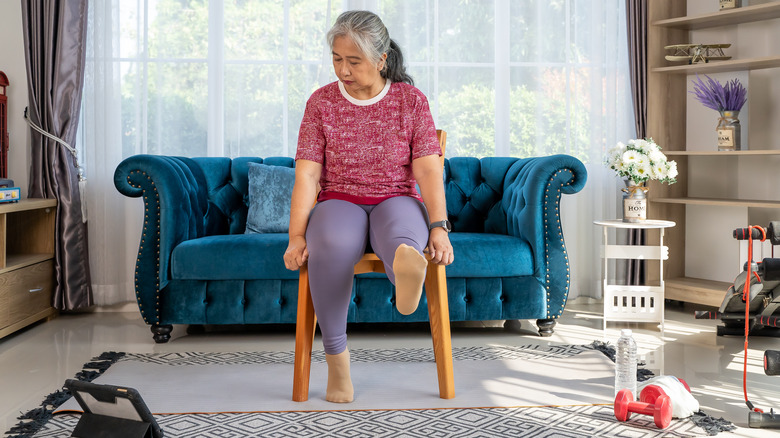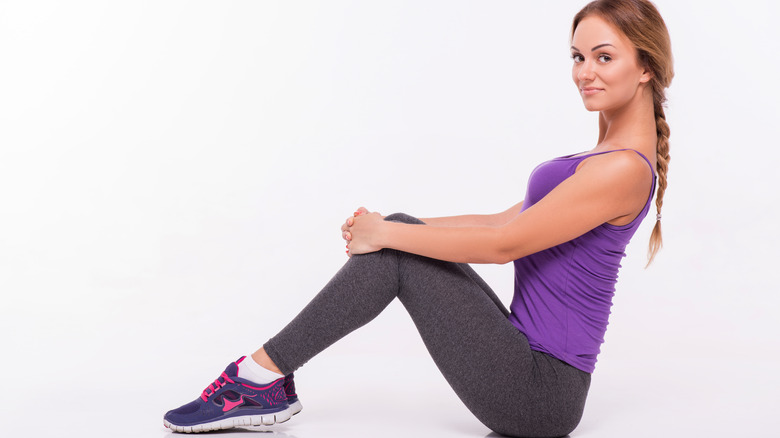The Right Way To Do Single-Seated Leg Raises
There are two different ways to do single-seated leg raises, also known as seated leg lifts. These exercises will work your legs, hips, and core, and require no special equipment to perform. As with any exercise, you can adjust the difficulty based on your fitness and ability. When incorporating a new workout into your routine, ABC Everyday recommends starting slow and working your way up.
Start with the standard single-seated leg raise — a move you could even do while sitting on a bus bench, according to Pop Sugar. Sit with your back straight and your legs bent with your feet flat on the floor. Keeping one leg bent, straighten your other leg, raising it so it's parallel to the floor, or as high as you can raise it. Keep your foot in a neutral position, so the bottom of your foot is facing away from you. Slowly lower your leg back down and only allow your foot to tap the floor before raising it again. Do up to 15 repetitions, then switch legs. Pop Sugar recommends doing two to three sets.
Single-seated leg raise variation
The second variation will have you sitting on your yoga mat rather than in a chair. These leg raises will work your core and are excellent for strengthening your knees, according to Healthline.
Sit upright with your legs straight out in front of you. To begin, raise one knee so that leg is in a bent position with the foot flat on the mat. Your other leg stays straight out with the bottom of that foot facing forward. Put your hands around your bent knee for support. Then, raise the straight leg off the floor without bending the knee, lifting up to 12 inches off the floor or as high as you can. Keep your foot flexed, so the bottom of your foot is perpendicular to the mat. Lower your leg back down slowly and repeat 20 to 30 times, and then switch legs. If you can't make it to 20 repetitions, that's okay. Start at a number that works for you, and work up gradually. Always push yourself, but not so much that it's painful, and enjoy your strengthened hips, knees, and legs.


